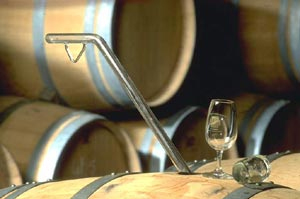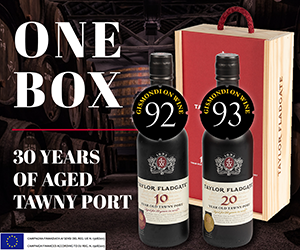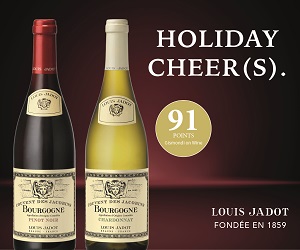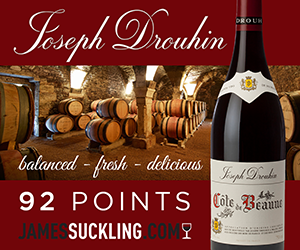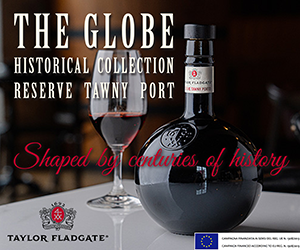There's little doubt in this taster's mind that the world's greatest sweet wines come out of Bordeaux's celebrated Sauternes appellation and more specifically from grapes infected with botrytis cinerea -- a mould the French affectionately call la pourriture noble or noble rot.
The growth of the highly beneficial botrytis mould is a result of cool morning mists (aided by the nearby confluence of the cold Ciron and Garonne rivers) and warm sunny afternoons.
Once established, the mould penetrates the grape's skin by way of microscopic hairs and evaporates the bulk of the inside juice. What's left are mostly desiccated, raisin-like grapes that, when pressed, yields tiny amounts of sugar-laden juice.
In Sauternes the sweet wine cépage usually mixes sémillon and sauvignon blanc, often with a dash of muscadelle. Interestingly the same grapes are used to make dry white Bordeaux.
The most widely planted is sémillon grape. It's the most susceptible to developing noble rot and the grape that lends the wine its deep yellow colour, and after some requisite aging, a distinctive bouquet of botrytis, pears and figs.
Sauvignon blanc plays a crucial supporting role adding freshness and vitality. Its crisp, underlying acid is also responsible for the wine's ability to age gracefully.
Muscadelle rounds out the trilogy and, if it is used judiciously, it brings a wealth of attributes including an aromatic bouquet, an enticing floral component while adding weight and texture to the wine.
The grape mix, the reductive action of noble rot and sufficient aging give Sauternes its multiplicity of layers and unctuous flavours making it much more than just another sweet wine.
Whether the wine is fermented in stainless steel tanks or small oak barrels, Sauternes comes by its residual sugar content naturally by arresting the alcoholic fermentation before all the natural grape sugar has been consumed by the yeast.
Sauternes best kept secret is the versatility it brings to the dinner table. Traditionally, North Americans have viewed this Bordeaux classic as a dessert wine confining its use to the end of the meal. In France the use of sweet wine is invariably broader and more imaginative, so much so that Sauternes producers do not refer to their sweet wine as dessert wine.
Classic pairings include foie gras and Sauternes or the "competing fungi" botrytised Sauternes and Roquefort cheese. Creamy soups and similarly styled seafood and poultry dishes are all good bets for Sauternes either in the dish or the glass.
Nineteen ninety-nine was a very successful harvest in Sauternes and a direct purchase by government buyers has given us an unusually broad selection at prices that should make local icewine producers swallow hard.
Any of today's sweet six (available in selected government specialty stores) could add an interesting flavour to your Easter celebrations.
Château Guiraud has an intense orange creamsicle nose with honey, citrus, vanilla and smoke aromas. It's thick and rich on entry but with much better acidity in the finish. Its citrus, honey, mineral and butter flavours remain fresh and lively. Will improve over the next 5 to 10 years.
The Château de Malle has a lovely, ripe, honey/peach butter nose with a slight dusting of lees and crème brûlée. Great acidity here and true elegance. The finish is much firmer and longer than most in the group and it's crammed with honey and apricot flavours.
The reputation of Château Coutet has been up and down of late but the '99 is back on track. Look for a big citrus nose streaked with honey, toasted oak and a touch of burnt matchstick. It has an elegant style with toasted cream, citrus and mineral flavours. Not a lot of extract but there is plenty of finesse.
You'll love Château Rayne Vigneau and its attractive floral, citrus nectarine nose. This is a very stylish sweet wine that should age gracefully. Look for mineral citrus and honey flavours with a creamy buttery finish. What it lacks in intensity is more than made up for by its elegance.
Château Bastor-Lamontagne is fermented in a combination of stainless steel and oak barrels and is then matured in small oak barriques (25 per cent new) for 15 months. It has a ripe nectarine and mineral nose with honey almost sugary aromas and just a trace of botrytis. Fat, baked pear flavours with more honey and citrus in a warm finish. A solid introductory style for curious dessert wine fans.
The best of the bunch is Château Suduiraut, a winery whose vineyards border those of famed Chateau d'Yquem. The '99 has wonderful buttery, vanilla, and mineral nose with sautéed pear, honey botrytis and apricot aromas. There is fine acidity and weight with more citrus rind, mineral, apricot, honey and vanilla flavours. The finish offers baked toffee and butterscotch. A serious bottle of wine.
Also tasted, but not pictured, were the Château Liot (15/20) and Château La Tour Blanche (17/20).
Sauternes, Bordeaux, FranceWine: Château Guiraud 1999
Price: $33.00
UPC: 714153212592
Score: 17/20
Comments: Orange creamsicle nose; honey vanilla butter flavours.
Wine: Château de Malle 1999
Price: $28.00
UPC: 3419466119527
Score: 16.5/20
Comments: Honey, peach, butter and crème brûlée.
Wine: Château Coutet 1999, Barsac
Price: $32.00
UPC: 626990010333
Score: 16/20
Comments: Elegant style, toasted cream and citrus mineral flavours.
Wine: Château Rayne Vigneau 1999
Price: $27.00
UPC: 714153234990
Score: 17/20
Comments: An elegant version with nectarine, honey and botrytis.
Wine: Château Bastor-Lamontagne 1999
Price: $23.00
UPC: 714153202395
Score: 15/20
Comments: Fat, baked pear flavours with a honey/citrus finish.
Wine: Château Suduiraut 1999
Price: $35.00
UPC: 714153237090
Score: 17.50/20
Comments: Delicious flavours of apricot, honey toffee and butterscotch.

 quicksearch
quicksearch

